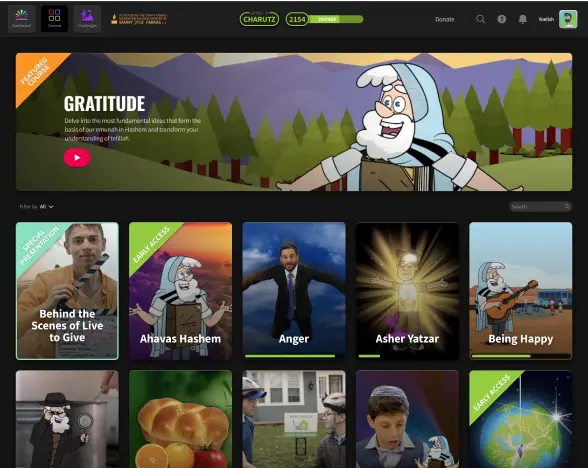
The Best-Kept Secret of Emunah and Tefillah
This blog post is part of a series on tips for teaching Emunah and Tefillah in the classroom. Sign up for our newsletter to get notified when the next tip comes out.
What is the best-kept secret in the Lauren & Ezra Kest Emunah and Tefillah Project that every teacher needs to know about?
The videos themselves have an extremely powerful impact on students, but the best-kept secret is actually the student workbook.
During the past year, we have conducted ongoing meetings with teachers to get on-the-ground reporting on how Emunah and Tefillah is being used in the classroom. We were surprised to discover what a major role the workbook has in personalizing the lessons of the series in a way that is easy for students to understand.
For each video, the workbook has a few questions aimed at getting the students to think about emunah. For example, here are two questions from the fifth video in the series entitled, “The Greatest Pleasure There Is.”
Teachers have highly recommended that these two questions be used as a stand-alone double lesson as follows:
Session # 1
The students view the video “The Greatest Pleasure There Is” (5:31), and for the remainder of the lesson they meditate on and answer the two questions above. Each student chooses a quiet location either in the classroom or library and needs to really invest some time in answering these two questions.
Session #2
The teacher posts a student meeting list and meets individually with each student to discuss their answers.
One teacher commented to us that it was the first time his students ever thought about these questions and that the one-on-one meetings with his students enabled him to get to know his students on a much deeper level. More importantly, it challenged the students to think about who they are and how they view their role in the world.
Have you taught this unit with your class? Please share with us how you taught it in your classroom.
In the next teaching tip, we will be focusing on another section in the student workbook. Stay tuned…
If you haven’t read our first tip, see When Teaching Emunah, There Are No Shortcuts!


